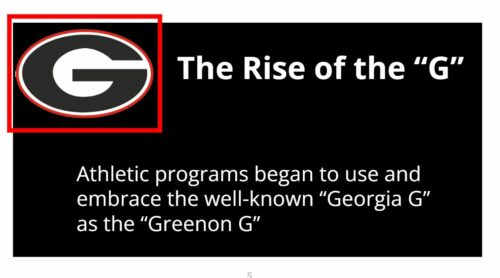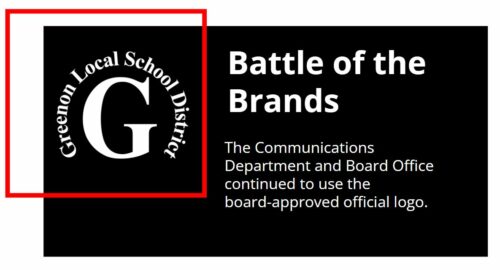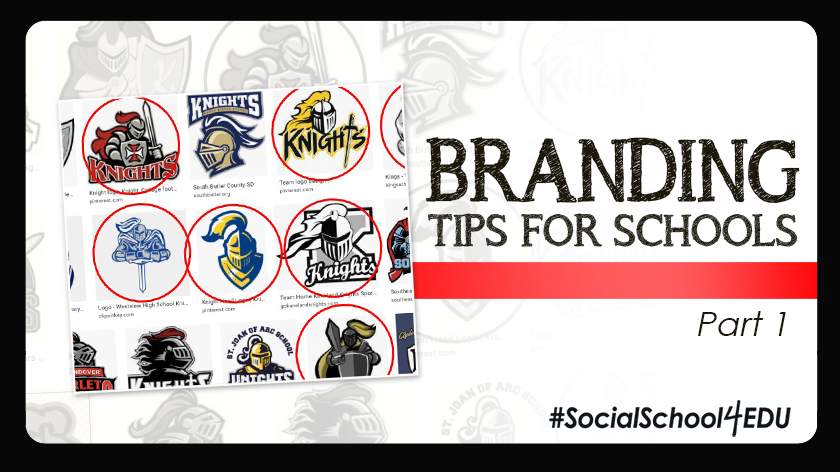“A brand’s strength is built upon its determination to promote its own distinctive values and mission.”
– Jean-Noel Kapferer
A brand is more than a logo and school colors. A brand is an identity… a voice… an unambiguous presence that is identifiable with you and only you, as a school district.
But in my 8+ years working in school social media, I have seen the good, the bad, and the ugly when it comes to school branding! We are all in a space of continuous improvement, so today’s blog is going to serve as your roadmap to leading a rebrand for your school. Whether you’re currently going through the rebranding process or if you see it as an inevitability in the near future, this article is for you.
Let’s dig in!
Meet Megan Anthony
Megan Anthony is the Communications Coordinator for Canal Winchester Schools in Ohio. She’s also been an active member of the Social Media Crew for Schools since 2019. Megan shared her experience with rebranding Greenon Schools in Enon, Ohio during a special live skills session for the Crew, and kindly granted her permission for me to reshare her key points in this blog.
Thank you, Megan!
Do You Have a Logo Problem?
While a brand is more than a logo, it often starts there.
When she worked with Greenon Schools, Megan found that there was very little consistency around the use of the school logo. In fact, the athletic department had started using a completely different logo that the community loved, but it wasn’t approved by the superintendent or the board! This led to brand confusion and frustration, as the unofficial (yet more popular) logo couldn’t appear on anything official for the school.


Megan shared that some schools use logos that are recolored versions of college/professional team logos, which in some cases could lead to copyright claims. In many cases, even when a school does have an original logo, the coloring and usage guidelines vary widely within the district.
Other signs that your school might need a rebrand include:
- You updated your school mission statement or core values
- You have a new school mascot
- You restructured your schools or attendance zones
- You passed a major bond/referendum
- You have not revisited the brand in 10+ years
Lay the Groundwork for a Rebrand
It’s not easy to lead a rebranding effort. Change is hard for many people, and alumni and community members will have an emotional attachment to the current brand. You could even keep the same mascot and people will get emotional!
Megan shared, “You just have to be determined and have your reasoning for why this is going to serve your district better than what you’ve been doing.”
Megan’s rebranding effort came after a $50 million bond issue passed, and the district was building a brand-new K-12 school. She saw her opportunity and began talking to district leadership.
“We have this brand-new school! We should do the work to get a strong visual brand so that we have the right branding throughout this school. We can’t invest $50 million into something that isn’t really showing who we are!”
Find Your “Why”
Megan gathered data around the following three questions:
- What’s wrong with the current branding? Identify the problems – such as a lack of consistency, lack of knowledge, or general brand confusion.
- What’s right about the current branding? What do people love? Where are their emotional ties?
- Why now? What makes this the right time to take on this initiative? Why should it be a priority? Are other changes coming up (new athletic uniforms, a new school address, etc.) where it just makes sense to rebrand, now?
Build Your Pitch
Once you’ve built a strong “why,” it’s time to make your pitch to the people in charge of approving your effort. Megan advised building your pitch around the following questions:
- Who is your audience?
- Who are your allies?
- Who do you need to convince?
- What are the pros for rebranding?
- What are the cons?
- What resources do you need?
Once you’ve made your pitch and gotten the green light for a rebrand, the real work begins!
Identify Your “How”
Megan built out a committee of core stakeholders who were committed to seeing the rebrand project succeed. She also looked for professional consultants with experience in school rebranding to help guide the rebrand process, and identified other tools (like community surveys) to make the project happen.
Engage Your “Who”
Megan says that here is where things can get messy… who needs a seat at the table in the rebranding process? It looks different for every district – school leadership, teachers, parents, community members, current students, future students, coaches, alumni – but your main goals remain the same.
Goal #1: Identify your audiences and make sure they are heard and represented.
Goal #2: Understand what your audiences love about the current branding.
Goal #3: Communicate the value of the branding process.
“You’re going to have people who push back against you. We really had to confront some attitudes and feelings to make sure that it did not end up being just one group of people who were guiding the process. Make sure you have an idea of what is it that made them rally around this. What’s important to them? And then communicate the value of the branding process. Tell people what you’re doing and why you are doing this and why it’s important.”
Gather Input and Feedback – Beginning to End
To reign in the wide range of feedback, Megan followed this three-step process:
Step #1: Prepare your audience for the development of the new branding by sharing your “why.”
Step #2: Involve your audience throughout the process with updates and opportunities for input.
Step #3: Excite your audience about the new branding with high-quality branded content in your rollout.
Yes, feedback can be a double-edged sword! But in the world of education, it’s important that we are transparent and focused on getting buy-in.
Megan conducted in-depth surveys to gather valuable input and allow people to feel heard, using Google Forms. You won’t be surprised to learn that she received a very good response rate on the survey. People were really passionate about the brand! Then, she conducted smaller focus groups.
Megan next worked with a professional graphic designer to develop designs with all of this feedback in mind. After narrowing these down to a few options, Megan surveyed the audience one final time to pick a winning logo. This also included all K-12 students – all the way down to kindergartners, who circled their favorite logos on a sheet of paper.
Note: If you tell your audience that they get to pick the final logo, follow through! Be prepared for any of your final choices to be the winning design.
All in all, her rebrand process took one full school year; it kicked off in September and the final logo was approved in June.
Rollout and Protect Your New Brand
We’re leaving you on a cliffhanger for this one! Come back in two weeks for Part 2 of this blog, to learn how to roll out your new brand and how to ensure it’s protected, going forward. We’ll even share the final version of their logo efforts!
Thank you again, Megan, for your awesome Skills Session!



